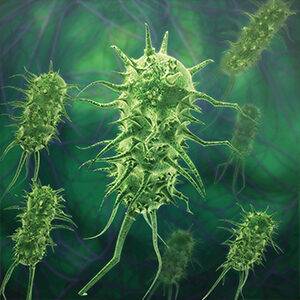What is pink eye?
Pink eye or conjunctivitis is a common, mild infection of the eye. It can be caused by bacteria or viruses. Allergies and other irritants in the environment can also cause pink eye.
What are the symptoms of pink eye?
A person with pink eye will have discomfort, a scratchy feeling, itching, or pain in the eye. The white of the eye may appear pink or red, sometimes with visible blood vessels. The inner eyelid may appear inflamed and red as well. If someone has a viral infection, the discharge from the eye will usually appear watery and clear. Discharge from a bacterial infection will often appear thick and white, yellow, or green in color. Infectious pink eye, either viral or bacterial, may begin in one eye and move to the other eye. Pink eye caused by allergies or other irritants will often arise in both eyes at once.
How soon after an infection of pink eye do the symptoms appear?
The incubation period for viral conjunctivitis is up to a week. The infection may last up to two weeks. In bacterial pink eye, the incubation period can be as little as a few days. A bacterial infection typically lasts up to a week when treated with antibiotics.
What is the treatment for pink eye?
It is important to seek medical advice and treatment if a child has symptoms of pink eye, whether the infection is viral or bacterial. If the child complains of severe pain, changes in eyesight, or sensitivity to light, seek medical attention immediately, even if treatment has been completed.
Typical treatment for pink eye from a viral infection is a cool water compress which may soothe the discomfort.
Treatment for bacterial infections usually includes the use of an antibiotic. A child with a bacterial infection will need to be kept at home and treated with the antibiotic for one full day before returning to school or childcare. A cold compress also relieves symptoms of bacterial infections.
Pink eye from allergies and irritants often is treated with lubricant and antihistamine eye drops.
What can be done to prevent the spread of disease?
Proper hand washing is highly recommended to prevent the transmission of pink eye and other infections. If you come into contact with any material that has been in contact with an infected person’s eye, wash your hands immediately and thoroughly. Other ways to prevent pink eye from spreading include:
- Avoid touching an infected person’s eye.
- Avoid touching tissues or gauzes that have been in contact with the person’s eye.
- Do not share or use washcloths, towels, pillowcases, eye makeup, or eye drops that have been in contact with the infected person.
Avoid reinfection:
- Clean eyeglasses.
- Replace contact lens solution used while infected.
- Throw away disposable lenses used while infected and clean extended wear lenses as directed.
Seek medical care when there is/are:
- Moderate to severe pain in eyes
- Vision problems, such as blurred vision or sight sensitivity
- Intense redness
- Symptoms persist or become worse

Communicable Disease Investigation & Prevention (CDIP)
Epidemiologists monitor, track, and respond to infectious disease in the community to prevent spread of illness.

